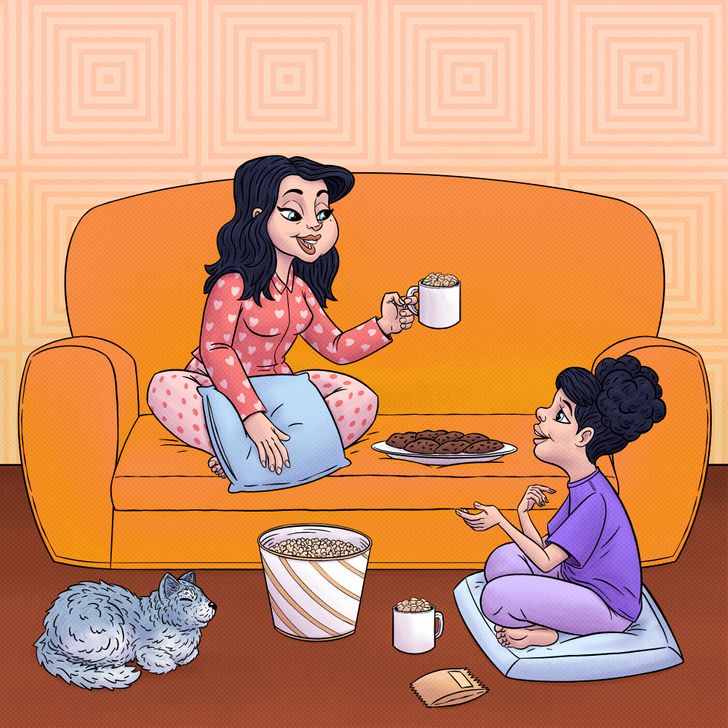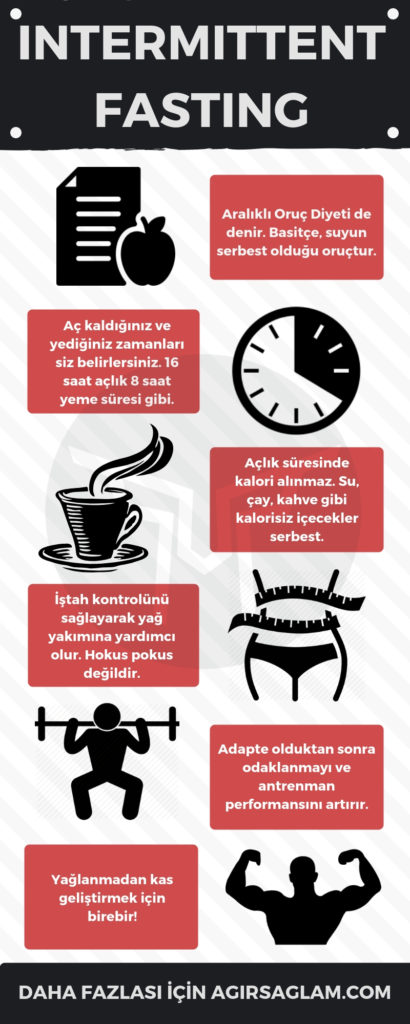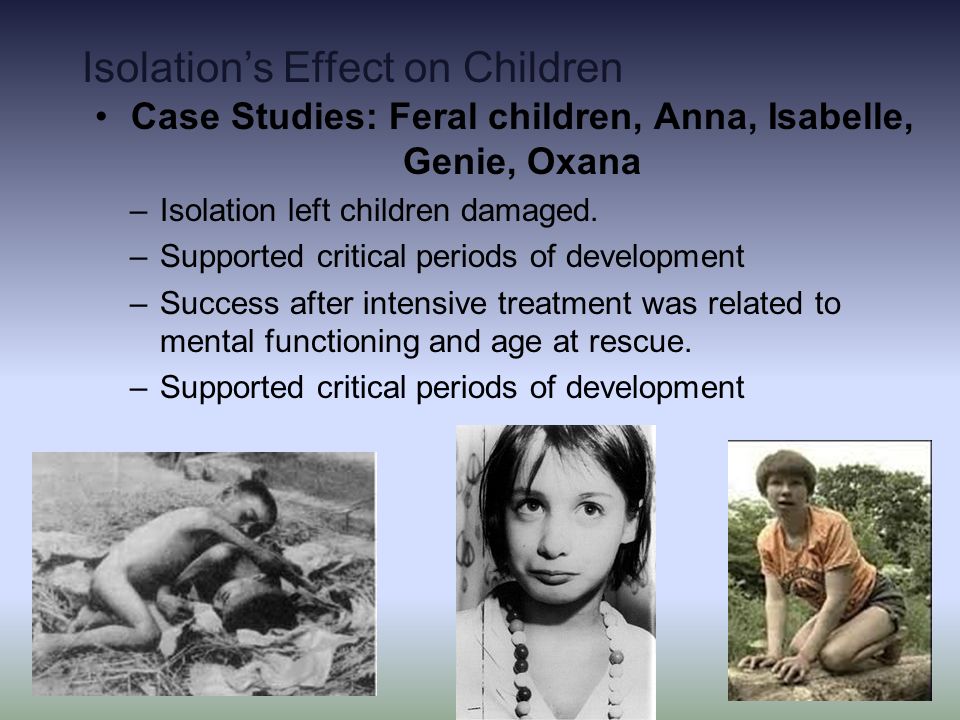Mother daughter conflict
Uncovering the root cause of mother-daughter conflict
An experienced counselor recently admitted to me that she felt out of her depth when a mother and adult daughter both came to see her for help with their incessant arguing. She said that she struggled to identify the core reasons for their arguments, and she knew that the communication skills and boundaries she tried to instill in them did not address the core reasons for their relationship difficulties.
Sadly, this counselor is not alone. Colleagues frequently tell me that they feel unprepared when it comes to working with mothers and daughters. They blame the absence of specialized training. This lack of focus on the mother-daughter relationship creates unnecessary anxiety among counselors and psychotherapists, and frustration for female clients. For example, only in 2016 was the Adult Daughter-Mother Relationship Questionnaire developed (for more, see Julie Cwikel’s article in
The Family Journal). And in my office, all too often I hear mothers and daughters voice their frustrations about the lack of specialized help.
In this article, I share two insights that will help counselors understand the dynamics between a mother and daughter of any age. These insights come from the mother-daughter attachment model I have developed through my 20-plus years of listening to thousands of mothers and daughters of all ages from different countries and cultures. The model makes the complicated dynamics between mothers and daughters easy to understand, explains why mothers and daughters fight, and teaches how mothers and daughters can build strong, emotionally connected relationships.
I chose to specialize in the mother-daughter relationship back in the 1990s because that relationship is central to women understanding themselves. My relationship with my mother had shaped who I was, and when my daughter was born 30 years ago, I knew I had to change the harmful themes that were being passed down the generations. What began as a personal quest became my professional mission.
Mothers and daughters frequently tell me that they feel ashamed about their relationship difficulties. They feel that they “should” be able to get along because popular wisdom tells them that mothers and daughters are supposed to be close. This societal expectation makes mothers and daughters blame themselves for causing their relationship difficulties. The truth is, if my years of experience providing therapy are any indication, many women currently experience mother-daughter relationship conflict.
They feel that they “should” be able to get along because popular wisdom tells them that mothers and daughters are supposed to be close. This societal expectation makes mothers and daughters blame themselves for causing their relationship difficulties. The truth is, if my years of experience providing therapy are any indication, many women currently experience mother-daughter relationship conflict.
Based on the inquiries I receive from mothers and adult daughters from different countries, I believe that a larger, societywide dynamic is contributing to their relationship conflict. Often, I hear “hormones” being blamed as the cause for relationship problems, whether it is the teenage daughter’s or pregnant daughter’s hormones, or the menopausal mother’s hormones. Another common reason mothers and daughters give to explain why they are not getting along is their differing or similar personality traits. I have never found hormones or personality traits to be the core reasons for mother-daughter relationship conflict, however. Rather, I have concluded that society sets mothers and daughters up for conflict.
Rather, I have concluded that society sets mothers and daughters up for conflict.
In the first insight, I show that the mother-daughter relationship is not difficult to understand once we realize that mothers and daughters do not relate in a cultural vacuum. In recognizing that mothers and daughters relate within a sociocultural and multigenerational environment, the dynamics between them become easier to grasp. We see how life events, restrictive gender roles, unrealized career goals, and the expectation that women should sacrifice their needs in their caregiving role all shape how mothers and daughters view themselves and each other and how they communicate. To illustrate this dynamic, I share the story of my work with Sandeep, a young college student from England (name and identifying details have been changed).
In the second insight, I explain how patriarchy’s way of silencing and denying what women need is the root cause of most mother-daughter relationship conflict in different cultures around the world. To illustrate, I share my work with Miriam, a doctor from Sweden who comes from a feminist family (name and identifying details have been changed).
To illustrate, I share my work with Miriam, a doctor from Sweden who comes from a feminist family (name and identifying details have been changed).
Miriam and Sandeep come from different countries and cultural backgrounds, and their families are on opposite ends of the women’s rights continuum, yet their core relationship problem is the same. Both Miriam and Sandeep come from families in which women have not learned how to ask for what they need.
Insight No. 1: Mothers and daughters relate in a sociocultural environment
As is the case with any couple, mothers and daughters rarely fight over what they say they are arguing over. Sandeep and her mother were no exception to this rule. Sandeep was a young college student who lived at home. Her parents immigrated to England from India before Sandeep was born. Sandeep had three brothers, but she was the family’s only daughter.
Sandeep came to see me because she was feeling depressed about how critical her mother was. She was struggling to juggle her college work with the housework her mother and family expected her to do. She said her mother would accuse her of not being a good enough “housekeeper” and not caring enough for her mother when she was ill, which was often.
She was struggling to juggle her college work with the housework her mother and family expected her to do. She said her mother would accuse her of not being a good enough “housekeeper” and not caring enough for her mother when she was ill, which was often.
Sandeep had consulted a counselor before me who had suggested that her mother might be suffering from a personality disorder. I never got to meet Sandeep’s mother and work with her clinically, so I was unable to validate whether this might be the case. Regardless, even if Sandeep’s mother did have this diagnosis, it did not provide Sandeep with the answers
she needed.
Instead, Sandeep needed to understand the multigenerational sociocultural environment in which she and her mother lived. She also needed to understand what was going on in this environment that apparently caused her mother to be so angry and critical, and what caused Sandeep and her mother to believe that it was Sandeep’s responsibility to do all the housekeeping.
When I start working with new clients, I map their mother-daughter history. This is the primary exercise in the mother-daughter attachment model. It is an adaptation of the genogram exercise that family therapists use. The maps focus on the three main women in the multigenerational family, which in Sandeep’s case was Sandeep as the daughter, her mother and her grandmother. I map the experiences the three women have had in their lives, including the gender roles that have defined their lives and limited their choices and power. I also map how the men in the family treat their wives and daughters. Mother-daughter history maps provide an in-depth analysis of the multigenerational sociocultural environment in which the women in the family live and what is happening within that environment to cause mothers and daughters to argue, misunderstand each other, and disconnect emotionally. (Detailed instructions on using this exercise with clients are available in my book The Mother-Daughter Puzzle. )
Sandeep talked about her grandmother’s and mother’s lives and arranged marriages and shared how verbally abusive and controlling her father and grandfather were. She said the males in the family were encouraged to go to college and build their careers, while the females were expected to stay at home to help their mothers. As Sandeep provided these details, her family’s patriarchal structure came into sharp focus. Sandeep represented the first woman in her generational family to finish school and go to college.
Sandeep’s family believed in what I term the “culture of female service,” a global patriarchal belief system that views women as caregivers, not care receivers. Families that subscribe to the culture of female service expect mothers and daughters to be selfless, sacrificial, self-neglecting caregivers. This belief system does not recognize women as people with needs of their own.
Although I never met Sandeep’s mother, it was apparent to me (based on Sandeep’s descriptions) that she had internalized this family belief and did not know any other way of being. This meant that she did not understand Sandeep’s desire to go to college or her fight for her independence. I suspected that Sandeep’s independence felt threatening to her mother. Several reasons explain why Sandeep’s mother was so critical of her daughter and why she behaved in an emotionally manipulative manner — for example, by becoming ill just when Sandeep was busy with an assignment or exam.
This meant that she did not understand Sandeep’s desire to go to college or her fight for her independence. I suspected that Sandeep’s independence felt threatening to her mother. Several reasons explain why Sandeep’s mother was so critical of her daughter and why she behaved in an emotionally manipulative manner — for example, by becoming ill just when Sandeep was busy with an assignment or exam.
First, Sandeep wanted to live a different life than her mother and grandmother had lived, and this likely made Sandeep’s mother feel alone and abandoned. Her only understanding of being female was that of women as caregivers and of “good daughters” stepping into their mothers’ shoes and walking repeats of their mothers’ lives. Sandeep’s mother had done that, her mother had done that, and she expected Sandeep to follow in that role. I suspect Sandeep’s wish for a different life and different relationships felt like a rejection to her mother. It made her feel that her daughter was criticizing the life and values she believed in as a mother.
Second, Sandeep’s mother could have been jealous of her daughter’s freedom and opportunities, even though she probably was unaware that her criticism and anger were rooted in jealousy. Sandeep’s freedom and opportunities might have been an uncomfortable mirror for Sandeep’s mother, reminding her of the freedom she never had and the dreams she had to relinquish.
Third, the mother’s attempts to keep Sandeep from graduating and leaving home could have been linked to her own fight for emotional survival. Sandeep reported to me that she was the only person who gave her mother love and care, so the thought of Sandeep leaving home must have been terrifying to her mother.
For mothers and daughters to build a strong, emotionally connected relationship, it is optimal for both parties to engage in couples therapy. However, if one person is not able, or willing, to participate, healing is still possible. In Sandeep’s case, her mother did not want to participate in therapy. This did not prevent Sandeep from working on understanding and improving her relationship with her mother, however. When one person changes their behavior, the relationship changes to incorporate the new behavior. Of course, Sandeep and I had little control over how her mother would respond to the changes Sandeep needed in their relationship.
When one person changes their behavior, the relationship changes to incorporate the new behavior. Of course, Sandeep and I had little control over how her mother would respond to the changes Sandeep needed in their relationship.
My work with Sandeep involved teaching her how to listen to her own voice. Sandeep had become an expert on responding to what her mother needed and being a “dutiful daughter,” but she had little idea about what she wanted for herself, beyond finishing her degree. Sandeep did not know how to ask herself what she thought, felt, or needed emotionally because that conversation was not spoken in her family. My role as a mother-daughter therapist was to help Sandeep uncover the sexism she had inherited from her mother and grandmother that had silenced her voice. I helped her understand the gender inequality her family and culture normalized, and I taught her how to claim her own ideas of who she wanted to be and what she needed in her relationship with her mother — and in all her relationships.
I also helped Sandeep navigate the pushback she got from her mother and father when she stopped complying with their demands to be the family’s unpaid housekeeper. I helped her to understand her mother’s and father’s perspectives so that she had empathy for them and encouraged her to recognize that their anger and criticism weren’t as personal as they felt, originating instead from their cultural beliefs. Alongside Sandeep’s increased understanding of her family’s sociocultural environment, I helped her increase her entitlement to speak her mind, reject unreasonable demands, and carve out her own life path.
Sadly, Sandeep’s parents did not react well to her behaving differently from what they expected of a “dutiful daughter.” After Sandeep left home, her family’s anger and accusations that she had dishonored the family became alarming, leading her to obtain a restraining order against her parents and siblings. Through her therapy, Sandeep learned the degree to which her family members did not tolerate women challenging their long-held beliefs about what women could and could not do and could and could not wear. I had to help Sandeep stay safe and grieve the loss of her family even as she gained her own voice and life.
I had to help Sandeep stay safe and grieve the loss of her family even as she gained her own voice and life.
Insight No. 2: Mothers and daughters fight over their denied needs
My clients have taught me that the denial of what women need, especially when it comes to women’s emotional needs, ripples below most mother-daughter relationship conflict. As I write in The Mother-Daughter Puzzle, when a family does not speak the language that inquires after what women feel and need, mothers and daughters are set up for conflict. It creates an either-or dynamic in which the mother and daughter fight over who gets to be heard and emotionally supported in their relationship because they do not know how to create a normal in which both are heard and supported.
In every mother-daughter history map I draw, I see how the silencing of women’s needs harms women’s emotional well-being, limits their ability to advocate for themselves in their relationships and workplaces, and perpetuates gender inequality. I see how this dynamic makes women invisible, and how being invisible makes women hungry for attention. The inability to openly and honestly ask about what they need creates emotionally manipulative behavior between mothers and daughters and sets daughters up to have to mind read their mothers’ unspoken and unacknowledged needs.
I see how this dynamic makes women invisible, and how being invisible makes women hungry for attention. The inability to openly and honestly ask about what they need creates emotionally manipulative behavior between mothers and daughters and sets daughters up to have to mind read their mothers’ unspoken and unacknowledged needs.
Miriam, a client from Sweden, contacted me for help with her adolescent daughter. Miriam and her mother had benefited from the women’s movement fight for women’s rights. Miriam and her mother were doctors, and Miriam’s husband and father were extremely supportive of their careers. But just like Sandeep and her mother, Miriam and her mother had internalized and normalized the culture of female service, and Miriam’s daughter was angry about her mother’s selflessness.
Miriam’s daughter felt that she had to mind read what her mother really felt and wanted, and she was tired of it. She desired an emotionally honest relationship with her mom. She wanted to feel free to say what she felt and needed and for her mother to speak her mind and stop the guessing games. Miriam’s daughter did not want to feel responsible for meeting her mother’s unvoiced and unacknowledged needs.
Miriam’s daughter did not want to feel responsible for meeting her mother’s unvoiced and unacknowledged needs.
The silencing of women’s needs is an intergenerational dynamic that gets passed on from mother to daughter because the mother is not able to teach her daughter how to voice her needs openly and honestly. When the daughter is expected, often unconsciously, to listen for and meet her mother’s unvoiced and unacknowledged needs, the daughter is learning to become an expert on understanding what her mother needs, not on what she needs herself. This means that the daughter will grow up to be as emotionally mute as her mother, thus setting up her future daughter to try to learn to interpret and meet her unvoiced needs.
Women’s generational experience of being emotionally silenced and emotionally neglected is a common theme between mothers and daughters. Happily, I am seeing a huge shift from adult daughters in their 20s, 30s and 40s who are waking up to this patriarchal theme and wanting change. These daughters recognize that they have learned — from their mothers and from society in general — to be far too tolerant of being silent and practicing self-neglect. More daughters are asking their mothers to join them in therapy so that together they can change these inherited behavioral patterns. Mothers and daughters are teaming up and pioneering a new normal in their families — a normal where women are speaking up and demanding to be heard. And they are passing on this new normal to the next generation of sons and daughters.
These daughters recognize that they have learned — from their mothers and from society in general — to be far too tolerant of being silent and practicing self-neglect. More daughters are asking their mothers to join them in therapy so that together they can change these inherited behavioral patterns. Mothers and daughters are teaming up and pioneering a new normal in their families — a normal where women are speaking up and demanding to be heard. And they are passing on this new normal to the next generation of sons and daughters.
Mothers and daughters have always led the call for women’s rights. When we understand that mother-daughter attachment disruption or conflict tells the story of how sexist beliefs and gender role stereotypes harm women’s voices and rights, the mother-daughter relationship becomes an unstoppable force for change at the worldwide and family levels.
Sadly, Sandeep’s mother was not able to join Sandeep in her fight to challenge her family’s sexist cultural beliefs. I inferred that too much neglect made Sandeep’s mother emotionally unable to think her way out of her powerlessness. Miriam, having had a far more supportive and empowering upbringing, was able to join her daughter to find a new normal for women within their family. This mother and daughter team coached each other as they decontaminated themselves from their internalized sexism and self-silencing habits.
I inferred that too much neglect made Sandeep’s mother emotionally unable to think her way out of her powerlessness. Miriam, having had a far more supportive and empowering upbringing, was able to join her daughter to find a new normal for women within their family. This mother and daughter team coached each other as they decontaminated themselves from their internalized sexism and self-silencing habits.
The mother-daughter relationship has tremendous power to change women’s lives around the world. When mothers and daughters band together, they create an impenetrable wall of resistance against family members who are threatened by women claiming their rights. I have had the honor of working with many pioneering mothers and daughters who dared to dream of a reality in which mothers and daughters are no longer starving for attention and fighting for crumbs of affection. These brave mothers and daughters recognize the harm that patriarchy, sexism, and gender inequality inflict on women, and they have decided that enough is enough. In essence, they are saying, “With us, it must end.”
In essence, they are saying, “With us, it must end.”
****
Rosjke Hasseldine is a mother-daughter relationship therapist, author of The Silent Female Scream and The Mother-Daughter Puzzle, and founder of Mother-Daughter Coaching International LLC (motherdaughtercoach.com), a training organization. She blogs for the American Counseling Association and has presented her mother-daughter attachment model at professional conferences, on Canadian television, and at the United Nations Commission on the Status of Women. Contact her at [email protected] or through her website at rosjke.com.
Letters to the editor: [email protected]
Counseling Today reviews unsolicited articles written by American Counseling Association members. To access writing guidelines and tips for having an article accepted for publication, go to ct.counseling.org/feedback.
****
Opinions expressed and statements made in articles appearing on CT Online should not be assumed to represent the opinions of the editors or policies of the American Counseling Association.
5 Causes Of Mother-Daughter Conflict
By Megan Glosson
if you're fighting with your daughter (or your mom) all the time, consider which of these five mother-daughter conflicts may be the problem.
Photo by Any Lane from PexelsIf you're the mother of at least one daughter, chances are you're no stranger to the conflicts that bubble up between you and your daughter. However, these arguments are usually no laughing matter, and they can even cause permanent damage in the mother-daughter relationship if not recognized and corrected.
So if you're fighting with your daughter (or your mom) all the time, consider which of these five common mother-daughter conflicts may be the root of your troubles.
RELATED: How To Confront Your Mother Without Disrespecting Her
5/5 Control
credit: pexels-ketut-subiyanto-4473774As girls grow up, they push for independence. However, many moms fall into patterns where they plan everything out for their children, sometimes to the point where they become controlling parents. While most moms do this because they genuinely believe it's in their daughter's best interest, Peg Streep of Psychology Today notes that this sends a message to the daughter that she's inadequate and helpless.
Eventually, almost all daughters want to break out of this and gain their independence, which means that moms who plan out everything from clothing to extracurricular activities for their daughters may encounter lots of conflicts. It becomes a power struggle, and if not handled effectively, it can lead to a lifetime to conflicts over everything that involves planning and control.
4/5 Denied Needs
Credit: iStockUnfortunately, we live in a society that often silences women and fails to meet their needs. When this social construct spills over into households, Rosjke Hasseldine of Counseling Today says that it sets the stage for mother-daughter conflicts. Because both the mother and daughter feel unseen and unheard, an either-or dynamic occurs. In other words, because moms and daughters feel like their emotional needs aren't being met, they're determined to fight for the attention and support they need — even if it's at the other's expense.
When this social construct spills over into households, Rosjke Hasseldine of Counseling Today says that it sets the stage for mother-daughter conflicts. Because both the mother and daughter feel unseen and unheard, an either-or dynamic occurs. In other words, because moms and daughters feel like their emotional needs aren't being met, they're determined to fight for the attention and support they need — even if it's at the other's expense.
This belief that both a mother and daughter's needs can't be met simultaneously can also set the stage for other battles. This dynamic can cause mothers to resort to emotional manipulation, or it can make daughters feel like they need to be mind readers to make their mothers happy. At the end of the day, all of this just leads to more conflict.
3/5 Overcommunication
Photo by Andrea Piacquadio from PexelsUnlike relationships with sons that involve more shared activities, mother-daughter relationships typically include lots of talking because women are more talkative by nature. Because of this, mother-daughter relationships are bound to encounter conflicts eventually, many times due to overcommunication or an abundance of verbal expression. In other words, both moms and daughters say things that offend each other eventually because they're just talking so much.
Because of this, mother-daughter relationships are bound to encounter conflicts eventually, many times due to overcommunication or an abundance of verbal expression. In other words, both moms and daughters say things that offend each other eventually because they're just talking so much.
However, the experts at VeryWell Family say that this issue can easily be avoided if moms and daughters try doing activities together from time to time to develop their bond in different ways. While this doesn't always avoid conflicts entirely, it can help keep both mom and daughter distracted if a difficult conversation does come up during their time together.
2/5 Enmeshment
Credit: iStockAccording to Margarita Tartakovsky with PsychCentral, it can be hard for daughters to develop their own individual identities at times due to the nature of most mother-daughter relationships. In fact, many mother-daughter relationships involve enmeshment, where the mother lives through her daughter. Just like other power struggles, an enmeshed mother-daughter relationship can involve lots of conflict because daughters want to break free, yet moms worry that they will lose themselves if their daughters build their own separate identities.
Just like other power struggles, an enmeshed mother-daughter relationship can involve lots of conflict because daughters want to break free, yet moms worry that they will lose themselves if their daughters build their own separate identities.
In these cases, mothers and daughters need to learn how to separate themselves in a healthy, balanced way. While neither needs to completely cut themselves off from the other, both moms and daughters need to find a healthy balance.
1/5 Overreliance
Via PexelsIn cases where the daughter is the oldest child, moms can sometimes heavily rely on their daughter's help with caring for the house and younger siblings. Daughters take on a caretaker role and can even become the acting head of household in some situations.
However, this overreliance can cause lots of resentment for the daughter, especially as she grows up and realizes what's going on. While this type of relationship doesn't mean that the mother is incapable or even unloving, it can take years to work through and reach a stage where conflict no longer occurs because of it.
Although some mother-daughter conflicts are unavoidable, you can cut down on the amount of arguments that spring up with your daughter or even your own mom just by learning about these common conflicts. After all, knowledge is power, amiright?
READ NEXT: How I Dealt With My Love-Hate Relationship With My Mom
Why do mother and adult daughter conflict - May 17, 2013
Life
May 17, 2013, 15:20
256097
DiscussAdult daughters often live in conflict with their mother. Some of them do not hide this and speak about it directly, complain to their friends. And someone prefers to remain silent and pretend that everything is fine in relations with their mother. But the fact remains, and psychologists know about it.
Letter without envelope
Yes, it happens that a mother irritates her daughter so much (as the daughters themselves say - “enrages”) that she irritates her every word, every manifestation. The mother, as it were, becomes a lightning rod, a person who is to blame for all the troubles.
The mother, as it were, becomes a lightning rod, a person who is to blame for all the troubles.
“Most likely, this situation stems from childhood: remarks, advice that you don't ask for, lack of common ground,” explains psychologist Irina Sitnikova. - You have already lost hope of clarifying something, changing, reaching out, getting something other than advice: support, mother's pride, praise, sympathy. When a similar situation has not changed for years, it is easier to step back, replace irritation with indifference. And everything would be fine, but the need to love our parents dies only with us, even if we think that this need has already been carefully buried by us. You should write a letter to your mother and say in it what you are unhappy with, what you would like to change and what you expect from your mother. You don't have to give the letter to her, you need it, not her. We cannot do something to another person, but we can do something to ourselves, such as acknowledging our need to love our parents.
And then try to feel gratitude and compassion for your mother - to be able to love her, but remember that she is not without flaws, but you will not have another mother. To be able to be angry with her, but remember that you are angry with a loved one who has done and is doing everything for you that he can. And if she does something wrong, it is because she does not know how to love in a different way. Try to pay attention not to what the mother says, but to what she does for you. Remember that she does everything she can for you, she tries. Try to feel gratitude for what she does for you.
There is an expression: dissatisfaction with others is a projection of dissatisfaction with oneself. An adult daughter, like any person, may have different reasons for dissatisfaction: unsettled work, lack of money, lack of fulfillment in the profession, the uncertainty of her position. But the main one is the relationship with a man.
If a daughter does not have a man, then she believes that her mother is indirectly to blame. If he exists, but relations with him are unstable and do not develop the way a young woman wants, then the blame is also shifted to the mother. If the daughter has a husband, then the mother will still be the lightning rod. After all, the daughter will not express everything that she thinks to her husband: she is afraid of a conflict, afraid to ruin her relationship with him. And negative feelings accumulate, so she splashes out her discontent and irritation on her mother. Most often this happens unconsciously, without malicious intent. Just a mother is a mother, she must understand, take everything upon herself and forgive. That's how she's supposed to.
If he exists, but relations with him are unstable and do not develop the way a young woman wants, then the blame is also shifted to the mother. If the daughter has a husband, then the mother will still be the lightning rod. After all, the daughter will not express everything that she thinks to her husband: she is afraid of a conflict, afraid to ruin her relationship with him. And negative feelings accumulate, so she splashes out her discontent and irritation on her mother. Most often this happens unconsciously, without malicious intent. Just a mother is a mother, she must understand, take everything upon herself and forgive. That's how she's supposed to.
“It's a shame when children start making complaints,” psychologist Irina Sitnikova continues. We always do everything we can for them. So throw away your guilt. All the children of the world are dissatisfied with their parents, for all children they are always to blame for everything. Except for those whom their parents left in the care of the state, these children love their parents. ..
..
All children sooner or later begin to show signs of disappointment with their "ancestors". This is normal, this is growing up, there is a process of separation. If your daughter admires you endlessly, she will never dare to tear herself away from your skirt. Now she should have another object for idealization - a man.
So just be there for her. Let her be disappointed in you. In response to her claims, say that you may not be the best mother (yes, ideal mothers do not exist), but you love her and do everything in your power for her.
Every mother doubts that she is a good mother, and this is what allows her to be a good mother. And every mother experiences the process of separation as hard as a child, even if both parties do not show it. Release your daughter, she will return to you."
Don't grow old together
Are mothers always angels? Not always. Their most common mistake is to continue to consider their adult daughters as little girls and continue to play the role of a guardian-mentor in communication with them: you said something wrong, you did something wrong, do as I say! Constant advice and guidance. Daughter is pissed off. She is an adult, she wants to decide everything herself, because this is her life. And then there is a constant "correction" on the part of the mother. Mom seems to think that her daughter is still not smart enough, quick-witted, independent, so she needs to be taught, guided, prompted all the time. Mom seems to be watching her daughter all the time, controlling her. Therefore, it is not surprising that adult daughters seek to protect their lives from their mother's invasion.
Daughter is pissed off. She is an adult, she wants to decide everything herself, because this is her life. And then there is a constant "correction" on the part of the mother. Mom seems to think that her daughter is still not smart enough, quick-witted, independent, so she needs to be taught, guided, prompted all the time. Mom seems to be watching her daughter all the time, controlling her. Therefore, it is not surprising that adult daughters seek to protect their lives from their mother's invasion.
But it can be worse. If the mother has a strong, domineering character, then sometimes she manages to break her daughter's will, to subjugate her. She manipulates her daughter and blackmails her. The subtext is, “If you leave me (come home late, wear the wrong skirt, hook up with the wrong guy), then I will die.” Perhaps the mother is not aware of the perniciousness of her actions, but this does not make it easier. And if the mother manages to break her daughter's will and she completely obeys her mother, to the point that she puts an end to her personal life and stays with her mother, then they will grow old together. Have you ever seen this? Sad picture…
Have you ever seen this? Sad picture…
What should a mother do? Internally separate yourself from your daughter. Stop teaching her, stop giving her advice and interfering in her life. The daughter is already an adult and now she must build her own destiny, even if she makes mistakes. She needs to gain her own worldly experience, the only way she can become a mature woman.
“Surely your daughter also lacks sincerity in relationships,” psychologist Elena Kuznetsova tells mothers. Remember yourself as a daughter: mother's love is a very important need. By refusing to be friends with your mother, a person loses a lot. But these things don't just happen. Usually they are preceded by some kind of resentment, misunderstanding, something traumatic. And a direct question is hardly enough: “What are you offended by?” In their grievances, people tend to close up, fence off. It looks something like this: “Oh, are you doing this to me? Well, I don’t need you anymore, I can do without you!” It is these "iceberg foundations" that are most often found in mother-daughter conflicts.
She will succeed
You shouldn't fight with your daughter over who is more important and who should dictate to whom. We must endure, wait and wish her happiness. Sometimes you need to be able to keep silent, take on your daughter's pain. Everything is cured and forgiven by love.
“You are the main person in your daughter's life,” says psychotherapist Ekaterina Krasnikova. And she really needs you. Resentment will not help restore trust between you. Try to manage your emotions and take the first step, start a conversation. I think that it is more difficult for her to take the first step. Say that you thought you had a good, trusting relationship. Ask her what she thinks. She loves you, but protests (she herself does not fully understand what exactly she is against). Just go up to her and hug her."
Sometimes a timeout is the best solution. Stop trying to fix things. It is better to just step back from each other and let things take their course. Forget about disagreements and calmly accept everything as it is, without expecting or doing anything. Let the daughter live her life, go through her lessons, become a truly adult. She will succeed, no doubt. When she becomes a mature, independent, self-confident woman and is finally happy, then relations with you will definitely improve. You just need to calmly wait for this, believing that it will be so.
Let the daughter live her life, go through her lessons, become a truly adult. She will succeed, no doubt. When she becomes a mature, independent, self-confident woman and is finally happy, then relations with you will definitely improve. You just need to calmly wait for this, believing that it will be so.
Inna Kriksunova, for Fontanka.ru
LIKE23
SURPRISE0
SAD1
Comments 0
No comments yet.
Be the first to comment!
add a commentJOIN
The brightest photos and videos of the day are in our groups in social networks
- VKontakte
- Telegram
- Yandex.Zen
Select a fragment and press Ctrl+Enter
Media news2
report news
Send your news to the editor, tell us about a problem or suggest a topic for publication. Upload your video and photos here.
- Group VKontakte
Companies News
CommentsCompanies
Today is the anniversary Sergey Vasyanenko - one of the leaders of the Orimi group of companies
Sergey Vasyanenko - Leningradsky - A graduate University, Candidate of Physical and Mathematical Sciences, at 19In 1994, he became one of the founders of Orimi Trade, a trading company selling packaged tea. Today Orimi Group is one of the leaders in the Russian market of natural hot drinks, a major Russian tea and coffee producer, an integrated business model that implements all stages of product creation and promotion: import of tea and coffee raw materials, creation of our own unique tea blends and coffee blends, production of all...
The Triumph art project will take you to the Petrine era on a theatrical and musical time machine
The Hermitage Theater invites you to the premiere performance of the cycle "Triumphant Petersburg", which will take place on 12 November. By bringing together the best forces of the imperial theaters of St. Petersburg, the Triumph art project will launch a theatrical and musical time machine and take the audience to the era of the founding of St. Petersburg. The "Route" will pass through the great milestones in the history of the Russian Empire and its northern capital, accompanied by grandiose personalities who influenced the course of history, as well as musical works by great composers. The musical component of the journey...
By bringing together the best forces of the imperial theaters of St. Petersburg, the Triumph art project will launch a theatrical and musical time machine and take the audience to the era of the founding of St. Petersburg. The "Route" will pass through the great milestones in the history of the Russian Empire and its northern capital, accompanied by grandiose personalities who influenced the course of history, as well as musical works by great composers. The musical component of the journey...
A Young Photographer's Club has opened in the Yanila quarter
Lenstroytrest Group of Companies continues to create a good-neighborly environment in its neighborhoods through events, joint holidays, quests, master classes and sports competitions. In October, a new program was launched for young residents of the Dutch quarter "Yanila" in Yanino - the educational project "Young Photographer's Club". Club classes are held at the site of the Neighborhood Center. Here the guys study photography, the history of photography, the device of the camera, the basics of exposure metering (shutter speed, aperture, ISO), types of optics, compositional techniques, and also learn ...
Club classes are held at the site of the Neighborhood Center. Here the guys study photography, the history of photography, the device of the camera, the basics of exposure metering (shutter speed, aperture, ISO), types of optics, compositional techniques, and also learn ...
TOP 5
1A case has been opened in Ukraine against the Russian soldiers who were shot in Makiivka. UN demands investigation
183 537
2Colonel checking the recruitment of conscripts in Moscow caught on a bribe - he demanded a washing machine
96 777
353Petersburg history teacher died a month after mobilization
90 05 05 in the death of a Muscovite on the Murinskaya road. She was beaten to death for inattention
57 940
265 The court disinherited the children of billionaire Burlakov, who died of covid, who was not buried in St. Petersburg
Petersburg
47 319
13Company news
Daughter and mother: it is difficult, but necessary!
305,522
Man among men
To tell about her painful relationship with her mother, 40-year-old Katerina writes the book “Mom, don't read! Confessions of an "ungrateful" daughter. In it, she lists in detail her childhood and adult attempts to earn maternal love, each time unsuccessful. She does not write for her mother - this is how she tries to get rid of the pain, which "stretched out for many years and has not subsided so far" ...
Natalia is 36 years old and considers her mother her best friend. “We often call each other, go shopping together, and every weekend I come to her with my children. We are very close,” she shares. And after a pause, he admits that the visits are not entirely voluntary. It is worth missing at least one, and she feels guilty. As in her youth, when her mother reproached her for selfishness, constantly reminding her of what she sacrificed in life while raising her “ungrateful daughter”... by forgiving her, nor freed from dependence and guilt. In other words, they never truly matured. Why is it so difficult?
As in her youth, when her mother reproached her for selfishness, constantly reminding her of what she sacrificed in life while raising her “ungrateful daughter”... by forgiving her, nor freed from dependence and guilt. In other words, they never truly matured. Why is it so difficult?
“The relationship between mother and daughter is unique,” says psychotherapist Ekaterina Mikhailova. “They always have guilt and forgiveness, affection and rebellion, incomparable sweetness and incomparable pain, the inevitable similarity and its furious denial, the first and main experience of our “together” - and the first attempt to still be separately...
Competition. Struggle. Fear. A piercing need for attention, for approval. Horror before the power of this need. Love, sometimes manifesting itself in murderous, suffocating forms. The first experience of submission to power, "superior enemy forces" - and the very first experience of one's power over another person. Jealousy. Unspoken grievances. Expressed grievances. And above all this is the uniqueness of these relations. The other one won't."
Expressed grievances. And above all this is the uniqueness of these relations. The other one won't."
Merge in order to separate later
In early childhood, almost complete merging with the mother is necessary for the child in order to survive. “The sense of security that arises from such a symbiosis helps him grow, mature and gradually begin an independent life,” says psychoanalyst Elina Zimina. “But if there was no such closeness, the desire to merge with the mother, to feel her unconditional love, may remain the most important, the main one.”
That is why so many adults look at the world through their mother's eyes, act as she would have done, hope for her approval and appreciation.
For a girl, a mother is a perfect omnipotent being of the same sex as her. It is later, from about three to six years old, that she begins to compete with her for her father's love. It is easier for girls to distance themselves from their mother compared to boys, for whom the mother becomes the “object of love”. But if this does not happen, the merger can turn into dependence: they see only similarities in each other, but do not notice differences.
But if this does not happen, the merger can turn into dependence: they see only similarities in each other, but do not notice differences.
An adult who continues to struggle with his parents most likely never separated from them
Staying in a close relationship with her mother, the girl ceases to grow up, because she does not feel like a separate person. And only by moving away, you can find differences: “how am I different from her?”, “What am I?”, “Who am I as a woman?”. By holding her daughter near her, the mother prevents her from finding answers to these questions.
“Gradual separation, separation from parents, creates within us the mental space necessary to feel our own characteristics and desires, including our femininity,” explains Elina Zimina. “It is the ability to distinguish between what belongs to me and what belongs to another.”
You can compare yourself with someone who is on equal or almost equal positions with us. However, for a child, a mother is a creature devoid of flaws. To see a real woman in her, you have to overthrow her from an imaginary pedestal. It is enough to recall the intensity of passions between adolescents and parents to understand how painful this deidealization is.
However, for a child, a mother is a creature devoid of flaws. To see a real woman in her, you have to overthrow her from an imaginary pedestal. It is enough to recall the intensity of passions between adolescents and parents to understand how painful this deidealization is.
“When a teenager sees real people in his parents, the degree of hostility usually decreases,” says the psychoanalyst. “And an adult who continues to fight with his parents most likely never separated from them.”
But the separation does not end there either, and a girl who becomes a woman, a mother, has to establish a new distance with her own mother every time.
The third is not superfluous
Contradictions and conflicts, overt or hidden, are always present in the relationship between mother and daughter. “A mother can painfully experience the loss of her daughter’s unconditional love when, in the oedipal phase of development, she transfers her love to her father,” explains Elina Zimina. - Unlike girls, a boy at this age continues to love his mother. Therefore, in the relationship of mothers with sons, there are fewer conflicts and more harmony. And in the relationship of mother and daughter, there can be more conflicting feelings: in addition to love, they contain jealousy, envy and rivalry.
- Unlike girls, a boy at this age continues to love his mother. Therefore, in the relationship of mothers with sons, there are fewer conflicts and more harmony. And in the relationship of mother and daughter, there can be more conflicting feelings: in addition to love, they contain jealousy, envy and rivalry.
For a daughter, both poles of maternal love are equally dangerous: her lack and excess
In this connection, the image of the little girl who was once the mother herself clearly shines through. This image brings her back to memories of her own childhood, her relationship with her own mother, the experience of love and pain.
Both poles of maternal love, its deficiency and excess, are equally dangerous for a daughter. But the relationship of mother and daughter is not a relationship of two, but always of three people. “The father separates them and tells his daughter: “I am your mother’s husband and lover,” explains Elina Zimina. “At the same time, he supports his daughter, admiring her femininity, and makes it clear that later she will meet a man who will give her the desired love.”
“At the same time, he supports his daughter, admiring her femininity, and makes it clear that later she will meet a man who will give her the desired love.”
The third person who helps mother and daughter separate from each other may not be only the father or the mother's partner. An idea, a passion, a job is something that can completely capture a woman’s thoughts so that for this time she forgets about the child, feels “separated” from him.
This role can, of course, be played by a psychotherapist. “With one“ but ”, which is often not taken into account in dreams and plans,” Ekaterina Mikhailova insists. “Any third person is a temporary figure: having fulfilled his role, he must fade into the background, making room for the development of relations.”
Far and near
Where is the boundary between a good, trusting relationship and complete dependence on the wishes and moods of the mother? It is not always easy to find the answer to this question. Especially now, when a friendly relationship with the mother ("mother-girlfriend") is becoming the ideal of many women. But often they hide the lack of distance, the very “uncut umbilical cord”.
But often they hide the lack of distance, the very “uncut umbilical cord”.
Daily calls, requests for advice, intimate details - this is how it looks in life. But constant conflicts, and even a gap between mother and daughter, do not mean that there is no emotional connection between them. Distance is also not an indicator. “A daughter can be extremely dependent on her mother, despite the fact that they are separated by thousands of kilometers, or live with her in the same house and be independent,” says Elina Zimina.
A woman's natural desire to become independent can be hindered by her mother's desire to keep her by her side, often unconsciously. “Sometimes she perceives the separation of the child as evidence that he no longer loves her and leaves her - perhaps this is due to her own experience of sudden separation,” Elina Zimina gives an example. - She may not be sure of her own femininity and be jealous of her daughter's beauty. Or consider himself entitled to manage her life, because he sees his continuation in it. A single woman can look for a “substitute” husband or her own mother in a child.
A single woman can look for a “substitute” husband or her own mother in a child.
If parents allow their children to be free, but are ready to support if necessary, then the separation will take place peacefully
In response, the daughter manifests anxiety - fear of losing her mother's love, self-doubt, fear of men ... Some mothers want to keep their daughter at any cost, others, on the contrary, they strive to “get rid of” it as quickly as possible. At the first teenage attempts to declare independence, they say: “well, you are completely free and independent, you can live as you want.”
But behind this lies rejection. “Adult children also need support,” says Elina Zimina. “And if parents allow them to be free, but are ready to support if necessary, then the separation is likely to pass peacefully and good relations will continue.”
The path to freedom
True independence comes when a woman critically evaluates her mother's attitudes, behaviors, and life scenarios. It is impossible to completely abandon them, because in this way she will be isolated from her own femininity. But to accept them entirely means that she, having remained a copy of her mother, will never become herself.
It is impossible to completely abandon them, because in this way she will be isolated from her own femininity. But to accept them entirely means that she, having remained a copy of her mother, will never become herself.
“Usually, those who manage to unilaterally “withdraw claims” and stop nourishing painful relationships with their hopes, grievances, or playing the role of an ideal mother or daughter, usually succeed in moving towards a seemingly desired, but still not advancing independence,” says Ekaterina Mikhailova . Too close relationship is mutual. Often it just seems that “mom won’t let go” - both are not ready to move into a new phase of the relationship, but the responsibility for this is usually assigned to the older one.
If we really want changes, we need to start with a few tough questions to ourselves, Ekaterina Mikhailova advises: “What am I hiding from myself, explaining all the problems of my life with pressure, influence, interference and the need to take care of one or the other? Maybe it's me who fills the emotional void with the game of fighting for independence?
Maybe the world behind me scares me so much that it's easier for me to stay in a strange mixture of duel, dance and embrace with that other woman? What do I hope for, continuing to sort things out, reconcile, quarrel, reproach - or pamper and please? Maybe, in the depths of my soul, I still believe that it will be possible to prove something, that “she” will agree, accept, approve . .. "
.. "
How do we know if we have really managed to become independent and have broken the mother's umbilical cord? This is so if we are no longer torn apart by conflicting feelings, no longer tormented by internal conflicts. If we ourselves regulate the degree of trust and distance in relations with the mother, without feeling guilty. We can objectively assess what we are similar and what are different from each other. And finally, if we feel that we are connected with the mother in certain bonds, but not tightly attached to her.
As adults, we begin to build relationships with mothers in a new way. However, with some of them, this is especially difficult to do. Psychologist Susan Cohen and journalist Edward Cohen list 10 common types.
- Narcissistic . She dreams of seeing in her daughter a pretty doll who would think only of her mother.
- Supervisory . She has a rule for every occasion. And every time she tells her daughter that she did not fulfill it.

- Dependent on others' opinions . He worries about what the neighbors will think - even when his daughter has long grown up and left the city.
- Seductive . Always dressed in fashion, too short, too tight. She flirts with any man she meets, including her daughter's friends.
- Asphyxiant . Helps even when the kids don't need it.
- Borderless . Takes the successes and failures of his child very close, too close to his heart...
- Critical . Reproaches everything that the daughter (not) does, as well as what she dreams about.
- Closing eyes . Thinks things aren't going so badly, even when things can't get any worse.
- Omniscient . She had long ago done everything that her daughter hoped to do someday, and much better than she did.
- Accusing . Always dissatisfied, but waiting for the children to put their lives in order to satisfy her desires and dreams.

Learn more














